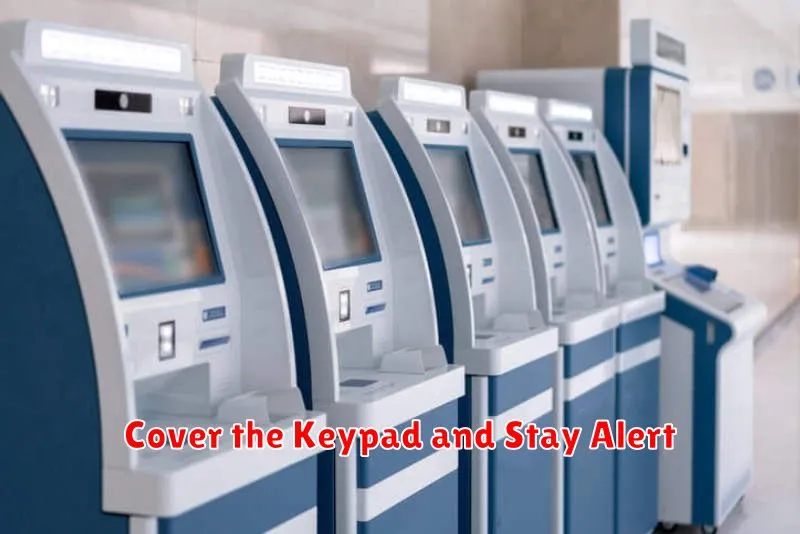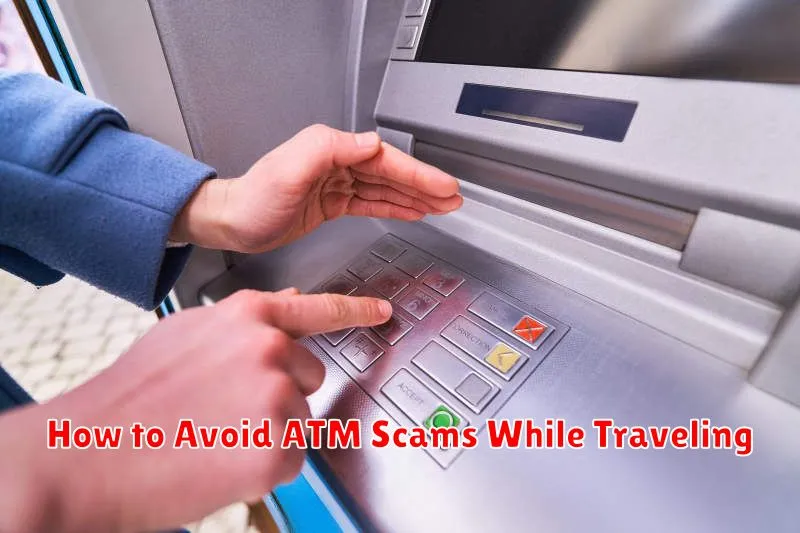Traveling can be an exciting experience, but it also presents opportunities for criminals to target unsuspecting individuals, particularly at ATMs. ATM scams are a serious concern for travelers, potentially leading to financial losses and identity theft. Protecting yourself from these scams requires vigilance and awareness of common tactics used by criminals. This article will provide you with essential information on how to avoid becoming a victim of ATM scams while traveling, ensuring a safe and enjoyable trip.
From skimming devices and card trapping to shoulder surfing and distraction theft, understanding the various methods employed by scammers is crucial for protecting your finances. By learning how to identify compromised ATMs and implement safe ATM practices, you can significantly reduce your risk. We’ll cover key steps to take before, during, and after using an ATM, empowering you to confidently manage your money while traveling abroad or domestically.
Common ATM Scams in Tourist Areas
Tourist areas often see a higher concentration of ATM scams due to the influx of visitors unfamiliar with local practices. Skimming is a prevalent tactic where criminals attach a device to the card slot to steal your card information. This device can be difficult to detect, so always inspect the ATM for anything unusual.
Another common scam involves Lebanese loops. This involves inserting a device into the card slot that traps your card. A “helpful” bystander may offer assistance, observing your PIN as you attempt to retrieve your card. Once you leave, they remove the device and your card. Be wary of unsolicited help and if your card is trapped, contact your bank immediately.
Shoulder surfing is a low-tech but effective scam. Thieves simply observe you entering your PIN. Shield the keypad with your hand while entering your PIN to protect yourself. Additionally, be mindful of distraction thefts, where one person distracts you while another steals your card or cash.
Finally, fake ATMs can be set up in tourist hotspots. These machines are designed to steal your card information and PIN. Stick to ATMs located within reputable banks whenever possible.
Use ATMs in Secure Locations
When traveling, prioritize using ATMs located within secure environments. Opt for ATMs inside banks, reputable retail establishments, or well-lit, highly trafficked areas. Avoid standalone ATMs in dimly lit or secluded locations, as these can be more vulnerable to tampering and surveillance by criminals.
ATMs located inside banks offer the highest level of security. These machines are typically monitored by security cameras and are less susceptible to skimming devices. If a bank ATM is unavailable, choose one inside a well-known store or shopping mall where there is a significant presence of people.
Be wary of ATMs in isolated areas, especially at night. These locations offer criminals greater opportunities to install skimming devices or conduct physical attacks. By choosing secure ATM locations, you significantly reduce your risk of becoming a victim of ATM fraud.
Inspect the ATM Before Use

Before inserting your card, take a moment to thoroughly inspect the ATM. Look for any signs of tampering. This includes loose or misaligned parts, scratches or adhesive residue around the card slot, or anything that appears unusual or out of place.
Specifically, check the card reader. Ensure it doesn’t have any extra attachments or overlays. A skimmer, a device used to steal card information, might be attached over the real card slot. If something looks suspicious, do not use the ATM and report it to the bank or local authorities.
Also, check the keypad. Look for any loose or raised keys. A fake keypad overlay might be placed on top of the real one to capture your PIN. If the keypad feels spongy or different than usual, it’s best to avoid that ATM.
Lastly, check the surrounding area for any hidden cameras. Scammers sometimes use cameras to record your PIN. Be aware of anything that seems out of place, such as a small hole drilled in the machine or a nearby object that could conceal a camera.
Cover the Keypad and Stay Alert

When entering your PIN at an ATM, always shield the keypad with your hand or body. This simple action prevents hidden cameras or prying eyes from recording your PIN as you enter it. Shoulder surfing, where someone nearby observes your keystrokes, is a common tactic employed by scammers.
Maintain awareness of your surroundings while at the ATM. If anything or anyone seems suspicious, cancel your transaction and leave immediately. Look for any signs of tampering with the card reader or keypad. If something feels amiss, trust your instincts and find a different ATM.
Be cautious of individuals offering assistance. Decline unsolicited help, even if they appear friendly or official. Legitimate ATM staff or bank personnel will rarely approach you directly at the machine. Should you require assistance, initiate contact with the bank through official channels.
Avoid Help from Strangers Near ATMs
When using ATMs, especially in unfamiliar locations while traveling, be wary of unsolicited help from strangers. Never accept assistance from anyone you don’t know, no matter how friendly or helpful they seem. Scammers often work in teams, with one distracting you while another steals your card or PIN.
If someone approaches you while you’re at an ATM, politely decline any offers of help. If they persist or make you feel uncomfortable, cancel your transaction and move to a different ATM. If you feel threatened, seek help from a trusted source, such as bank staff or local law enforcement.
Be mindful of your surroundings. Choose ATMs located in well-lit and secure areas, preferably inside banks or reputable establishments. If possible, avoid using ATMs late at night or in isolated locations. Protecting your PIN is crucial. Shield the keypad with your hand while entering your PIN to prevent anyone from observing it.
Withdraw Cash During Daylight
Whenever possible, plan your cash withdrawals for daylight hours. Criminals are more likely to target ATMs in dimly lit or isolated areas, especially at night. Increased visibility during the day offers a greater sense of security and deters potential scammers.
Being visible to others creates a deterrent for criminals. They are less likely to approach or tamper with an ATM when they know they can be easily seen and identified. If you must withdraw cash at night, choose well-lit ATMs located in busy, public areas.
Consider withdrawing cash inside a bank during business hours. This provides the safest environment possible as you’re within a secure building and can easily request assistance from bank staff if needed.
Contact Bank Immediately If Suspicious
If you notice anything unusual or suspicious at an ATM while traveling, it’s crucial to contact your bank immediately. This includes any unfamiliar devices attached to the ATM, unusual screens or prompts, or any difficulty with your transaction that seems out of the ordinary. A quick response can help protect your funds and prevent further fraudulent activity.
Before you travel, make a note of your bank’s customer service number and store it separately from your cards. This ensures you can reach them even if your card is lost or stolen. When reporting the incident, provide as much detail as possible, including the specific ATM location, the time of the incident, and the nature of your suspicion. Your bank can take immediate action, such as blocking your card or monitoring your account for unusual activity.
Do not hesitate to contact your bank even if you are unsure whether something is truly amiss. It is always better to err on the side of caution when it comes to your financial security, especially in unfamiliar surroundings while traveling.

